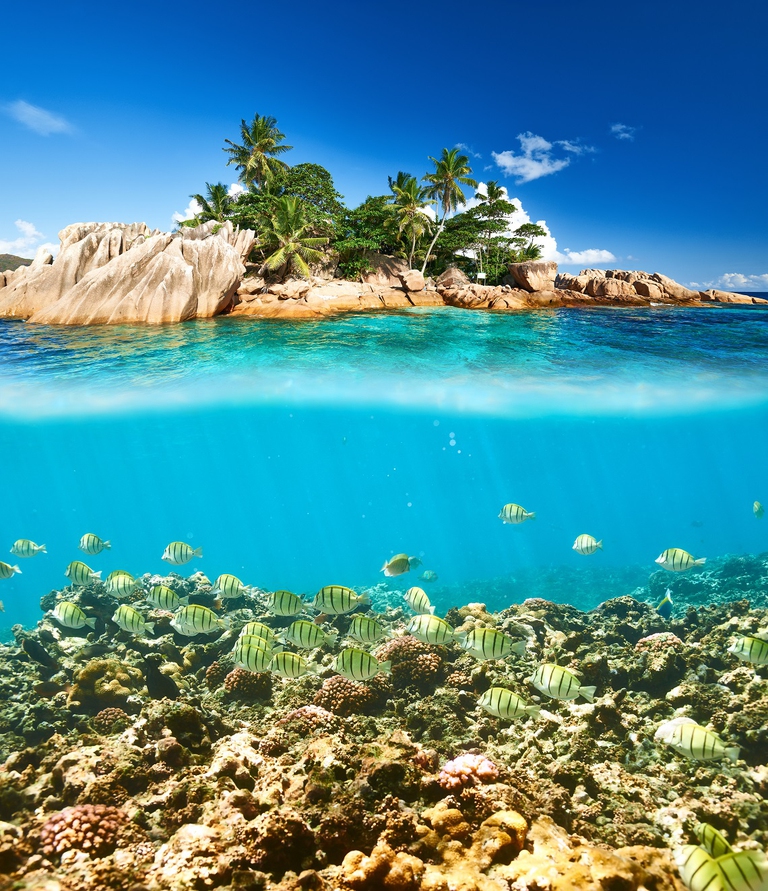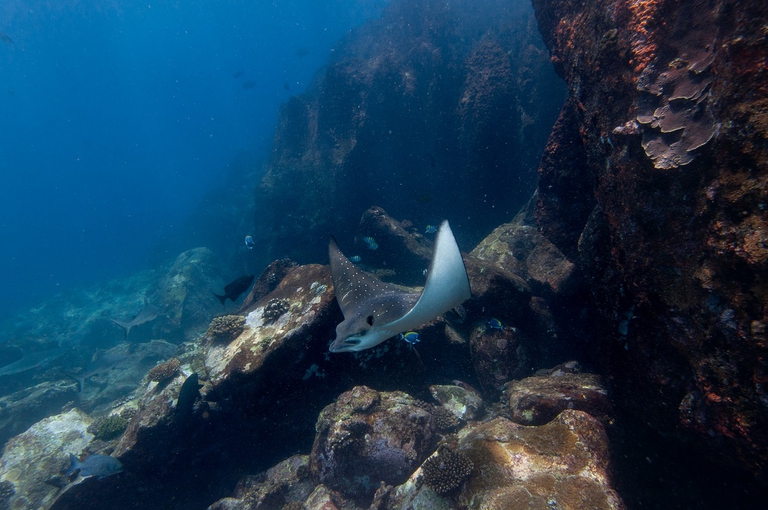
A group of experts in Tokyo suggested pouring radioactive water from Fukushima into the open sea. A marine biochemist explains the consequences of this absurd decision.
Seychelles have extended its marine protected area, which now covers over 400,000 square kilometres, an area larger than Germany.
The waters surrounding the Seychelles archipelago, made up of 115 islands in the Indian Ocean, are an extraordinary biodiversity hotspot, home to many native species. The African state’s vast ocean territory covers 1.3 million square kilometres in which various marine habitats can be found, from coral reefs to underwater algae forests, to pelagic zones. This inestimable natural wealth has now been granted further protection.
Seychelles President Danny Faure announced the extension of the country’s marine protected area on the 26th of March. Thanks to the approval of thirteen new conservation zones, an enormous expanse covering 410,000 square kilometres – approximately a third of the country’s oceanic territory and an area larger than Germany – will now be granted special protected status.
Read more: Seychelles swaps millions of dollars in debt in exchange for conserving its ocean
This achievement is the result of a debt conversion that was signed in 2012 by the government of Seychelles and environmental organisation The Nature Conservancy. The island nation committed to converting part of its large public debt into a commitment to enact oceanic conservation and climate change adaptation measures.
The Nature Conservancy granted Seychelles a 21.6 million US dollar loan with the goal of providing a cash flow to finance coral reef management, fisheries management and ecosystem-based adaptation to climate change, whilst improving fiscal health.
“Following six years of hard work, planning and over 200 consultation meetings, today we mark the third and final milestone in developing a Marine Spatial Plan for the whole Exclusive Economic Zone (EEZ) of Seychelles,” Faure stated. “Realising the importance of the ocean to the people of our nation, at the Rio20 United Nations Conference on Sustainable Development in 2012, otherwise known as RIO20, I had the opportunity on behalf of the country to announce a bold decision to increase marine protection from 0.04 to 30 per cent of our EEZ by 2020. This was long before today’s global target of 30 per cent ocean protection by 2030. Our achievement today is 10 years ahead of international targets”.
Approximately half of the new marine protected areas, those parts designated as having “high biodiversity” value, will have similar protections to those granted to marine national parks. This means that economic activities such as fishing, resource extraction and drilling aren’t permitted. In the remaining areas, with “medium biodiversity and designated for sustainable use”, certain economic activities are permitted, subject to regulatory approval.
Seychelles’ marine biodiversity is threatened by excessive fishing, pollutants dumped in the sea from the islands and habitat degradation caused by offshore fossil fuel extraction and exploration. The increase in ocean temperatures also has far-reaching, damaging consequences.
Read more: Ocean warming reaches new record over the past five years due to climate change
The aim of the new marine protected areas is to safeguard these delicate ecosystems that are home to at-risk species, such as green sea turtles (Chelonia mydas), Hawksbill sea turtles (Eretmochelys imbricata) and one of the Indian Ocean’s last remaining dugong (Dugong dugon) populations.
Siamo anche su WhatsApp. Segui il canale ufficiale LifeGate per restare aggiornata, aggiornato sulle ultime notizie e sulle nostre attività.
![]()
Quest'opera è distribuita con Licenza Creative Commons Attribuzione - Non commerciale - Non opere derivate 4.0 Internazionale.
A group of experts in Tokyo suggested pouring radioactive water from Fukushima into the open sea. A marine biochemist explains the consequences of this absurd decision.
The decline in grey and humpback whales in the Pacific and Atlantic Oceans has been traced to food shortages caused by rising ocean temperatures.
The United Nations has launched a major international alliance for ocean science, undertaking a mission close to all our hearts.
The cargo ship that ran aground off the coast of Mauritius on 25 July, causing incalculable damage, has split in two and its captain has been arrested.
The largest coral reef in the world is severely threatened by climate change, but researchers are developing strategies that could contribute to saving the Great Barrier Reef.
Norwegian oil giant Equinor had pulled out of drilling for oil in the Great Australian Bight, one of the country’s most uncontaminated areas. A victory for activists and surfers who are now campaigning for the area to be protected forever.
30 per cent of the planet needs to be protected to stop precipitous species decline. The UN has set out its aims for the the COP15 on biodiversity scheduled for Kunming, China in October.
Ocean warming has risen to record highs over the last five years: just in 2019 the heat released into the world’s oceans was equivalent to that of 5-6 atomic bombs per second. The culprit, no doubt, is climate change.
Refusing the anthropocentric vision and respecting the laws of ecology is the only way to safeguard the future of our and all other species, Sea Shepherd President Paul Watson argues in this op-ed.









